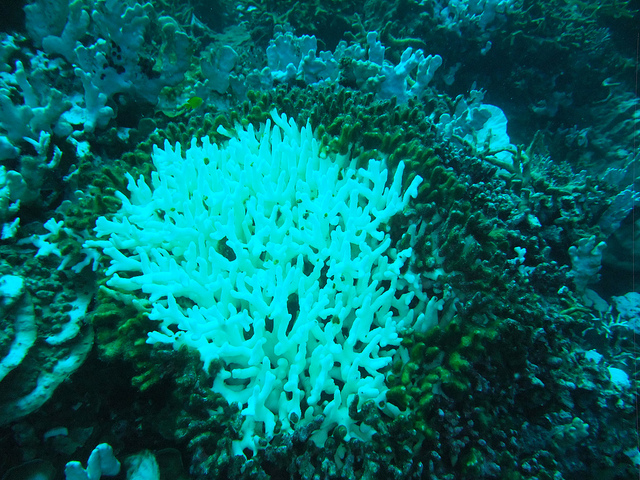Report on the Interception and Rehabilitation of Illegally Trafficked Corals in Alignment with Sustainable Development Goals
1.0 Incident Summary
An illegal shipment of approximately 200 live sea corals, originating from Indonesia, was intercepted at John F. Kennedy (JFK) International Airport by the U.S. Fish and Wildlife Service (USFWS). The confiscated corals were subsequently transferred to the New York Aquarium for rehabilitation and propagation. This intervention directly addresses critical global challenges outlined in the United Nations Sustainable Development Goals (SDGs), particularly those concerning biodiversity and marine ecosystems.
2.0 Violation of International Law and Impact on SDG 15
The importation of the corals was in direct violation of international and national regulations established to protect vulnerable species. This action contravenes key global conservation agreements and targets.
- Convention on International Trade in Endangered Species of Wild Fauna and Flora (CITES): The shipment lacked the necessary permits, undermining the international framework for regulating wildlife trade.
- U.S. Endangered Species Act: The trafficking of protected species violates U.S. federal law designed to prevent biodiversity loss.
This illegal trade directly undermines SDG 15: Life on Land, specifically Target 15.7, which calls for urgent action to end the poaching and trafficking of protected species of flora and fauna.
3.0 Rehabilitation Efforts and Contribution to SDG 14: Life Below Water
Following confiscation, the surviving corals were placed under the expert care of the New York Aquarium. The rehabilitation process is a critical action in support of SDG 14: Life Below Water, which aims to conserve and sustainably use the oceans, seas, and marine resources.
3.1 Condition of Seized Corals
The shipment, which had been in transit for five days, suffered significant stress. Of the 200 pieces seized, 30 were deceased upon arrival. The surviving 170 corals (an 85% survival rate) were found in poor condition, packed in plastic bags with contaminated water. The confiscated species included:
- Goniopora
- Acropora
- Lobophyllia
- Alveopora
- Euphyllia
3.2 Rehabilitation Protocol
The New York Aquarium’s team implemented a meticulous recovery protocol, contributing to scientific knowledge and research capacity (SDG Target 14.a). The process involves:
- Monitoring and stabilizing water chemistry to replicate natural reef conditions.
- Maintaining a constant water temperature of 75 degrees Fahrenheit.
- Providing a diet of plankton and algae to restore health.
- Slowly reintroducing appropriate lighting to avoid further stress.
This hands-on work showcases the advanced techniques necessary for reef conservation and contributes valuable knowledge to global efforts to protect and restore marine ecosystems (SDG Target 14.2).
4.0 Broader Implications for Sustainable Development
This incident highlights the interconnectedness of several Sustainable Development Goals. The conservation of coral reefs is not only an environmental issue but also a socio-economic imperative.
- SDG 13: Climate Action: The aquarium’s educational mission, using these corals as exhibits, will raise public awareness about the primary threats to reefs, including climate change and ocean acidification.
- SDG 12: Responsible Consumption and Production: The illegal trade is fueled by demand for private aquariums. This event underscores the need to promote sustainable consumption patterns and eliminate the market for illegally harvested wildlife.
- SDG 17: Partnerships for the Goals: The successful intervention was made possible by the effective partnership between a government agency (USFWS) and a scientific institution (New York Aquarium), demonstrating a model for achieving the SDGs through collaboration.
5.0 Conclusion: Advancing Global Goals Through Local Action
The rescue and rehabilitation of these 170 corals represent a significant victory for conservation and a tangible contribution to the 2030 Agenda for Sustainable Development. Coral reefs are vital ecosystems that support approximately 25% of all marine life and provide livelihoods for an estimated one billion people worldwide. By combating illegal trade, advancing scientific rehabilitation techniques, and educating the public, the New York Aquarium and its partners are taking direct action to protect life below water (SDG 14) and halt biodiversity loss (SDG 15) for a more sustainable future.
Analysis of Sustainable Development Goals in the Article
1. Which SDGs are addressed or connected to the issues highlighted in the article?
-
SDG 14: Life Below Water
This goal is central to the article, which focuses on the conservation of sea corals, vital components of marine ecosystems. The confiscation, rehabilitation, and planned exhibition of these corals directly relate to protecting marine life.
-
SDG 15: Life on Land
Although corals are marine animals, the principles of combating wildlife trafficking apply. This SDG’s targets on ending poaching and the illegal trade of protected species are highly relevant, as the corals were illegally shipped in violation of international treaties protecting fauna and flora.
-
SDG 4: Quality Education
The article explicitly states that the New York Aquarium aims to use the rehabilitated corals in public exhibits to “help visitors better understand coral ecosystems and the threats they face.” This educational component directly supports the goal of promoting knowledge for sustainable development.
-
SDG 13: Climate Action
The article mentions that corals are threatened by “climate change and ocean acidification.” By educating the public on these threats, the aquarium’s initiative contributes to raising awareness, which is a key aspect of climate action.
2. What specific targets under those SDGs can be identified based on the article’s content?
-
Target 14.2: Sustainably manage and protect marine and coastal ecosystems.
The effort by the New York Aquarium to rehabilitate and save the confiscated corals is a direct action to protect and restore a key part of marine ecosystems. The article highlights that “The New York Aquarium is a leader in this work, which contributes valuable techniques to reef conservation efforts around the world.”
-
Target 14.4: End overharvesting and illegal, unreported and unregulated fishing.
The article’s core subject is the confiscation of corals that were part of the “illegal trade.” It also lists “overharvesting” as a primary threat to coral ecosystems. The actions of the U.S. Fish and Wildlife Service directly address this target by intercepting illegally harvested marine life.
-
Target 15.7: Take urgent action to end poaching and trafficking of protected species of fauna and flora.
The confiscation of corals shipped in violation of the “Convention International Treaty in Endangered Species of Wild Fauna and Flora (CITES) and the Endangered Species Act” is a clear example of action against the trafficking of protected species.
-
Target 4.7: Ensure that all learners acquire the knowledge and skills needed to promote sustainable development.
The article states the aquarium’s hope that the exhibit “helps visitors better understand coral ecosystems and the threats they face.” This is a direct effort to provide education for sustainable development by informing the public about marine conservation issues.
3. Are there any indicators mentioned or implied in the article that can be used to measure progress towards the identified targets?
-
Number and species of confiscated wildlife.
The article provides specific data: “some 200 pieces” of coral were seized, including species like “Goniopora, Acropora, Lobophyllia, Alveopora, and Euphyllia.” This serves as a direct indicator of the scale of enforcement against illegal wildlife trade (Target 15.7).
-
Survival and mortality rate of confiscated species.
The article quantifies the outcome of the illegal shipment and subsequent rescue effort: “30 arrived dead,” and the aquarium “saved 85 percent of them,” with “170 surviving coral.” These figures can be used as indicators of the impact of trafficking and the effectiveness of conservation interventions (Target 14.2).
-
Economic value of the illegal trade.
An implied indicator of the market driving the illegal trade is mentioned: “Each one of the little bioluminescent coral could go for about $400 in a pet store.” This helps quantify the economic dimension of the problem (Target 15.7).
-
Public outreach and education.
The plan to place the corals in “the aquarium’s public reef exhibits” implies an indicator related to the number of visitors who will be exposed to the conservation message, thereby measuring progress towards educational goals (Target 4.7).
4. Summary of SDGs, Targets, and Indicators
| SDGs | Targets | Indicators |
|---|---|---|
| SDG 14: Life Below Water |
Target 14.2: Sustainably manage and protect marine and coastal ecosystems.
Target 14.4: End overharvesting and illegal trade. |
– Number of corals rehabilitated (170 survivors). – Survival rate of rehabilitated corals (85%). – Number of species saved (Goniopora, Acropora, etc.). – Development of conservation techniques for reef restoration. |
| SDG 15: Life on Land | Target 15.7: Take urgent action to end poaching and trafficking of protected species. |
– Number of illegally shipped items confiscated (approx. 200 pieces). – Enforcement of international treaties (CITES) and national laws (Endangered Species Act). – Estimated black market value of confiscated items ($400 per piece). |
| SDG 4: Quality Education | Target 4.7: Ensure all learners acquire knowledge for sustainable development. |
– Creation of public exhibits to educate visitors on coral ecosystems and threats. – Implied indicator: Number of aquarium visitors reached by the conservation message. |
| SDG 13: Climate Action | Target 13.3: Improve education and awareness-raising on climate change. | – Public education on threats to corals, including “climate change and ocean acidification.” |
Source: abc7ny.com







